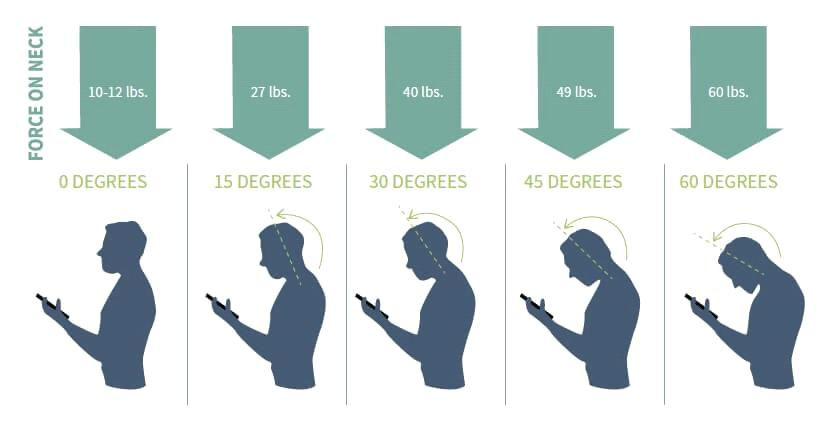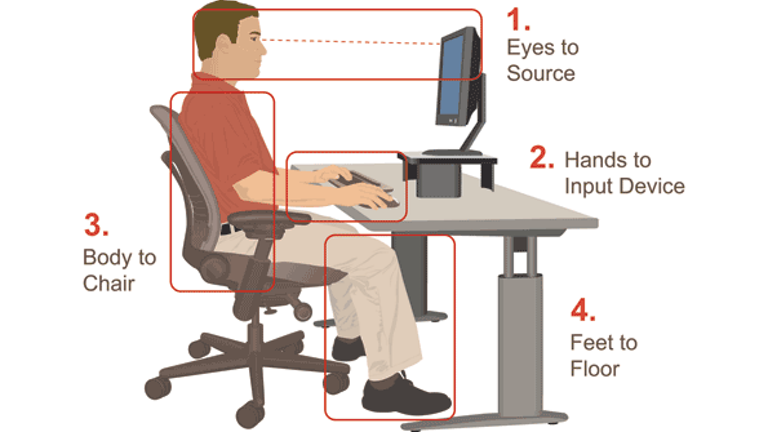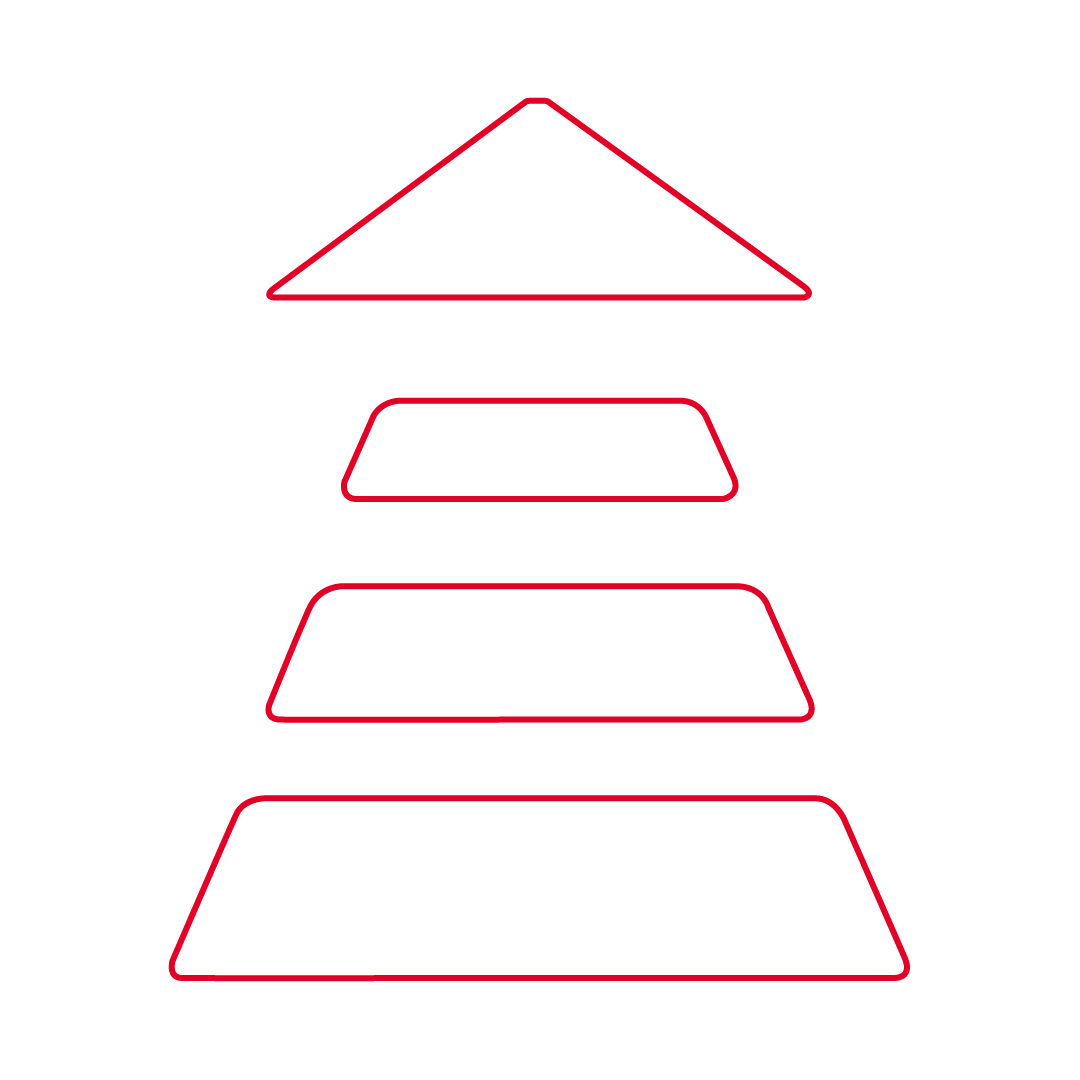The human head weights about 10 pounds. When your neck is straight the weight of the head is absorbed by the bones in the neck, it’s natural spinal curvature, and the muscles around the neck are lightly activated. Poor posture is often times the source of many chronic neck and back injuries. To explain this let’s use the example of how using your phone poorly can create chronic neck pain.

As the head moves forward the weight of your head increases. This is due to the concept of torque. The is similar to you holding a back pack very close to your body versus holding it with outstretched arms. This increased weight of your head forces the muscles around your neck to work extra hard leading to fatigue, tension, and pain at the end of the work day. This same concept applies to your lower back. If you are hunched forward over your desk your lower back is forced to hold up the weight of your torso. Your lower back will feel exhausted and tight at the end of your day.
When you sit up straight the weight of your head and torso is absorbed through the natural curvature of your spine and significantly reduces the work load of the muscles around your neck and back. Being mindful of your posture and sitting up straight can eliminate the root cause of most chronic neck and back pain.
The office ergonomics checklist:

1) Eyes to Source:
Raise your monitor to eye level. If you look straight forward your eyes would be starring at the top edge of the screen. Your gaze will naturally draw down toward the content on the screen.
2) Hands to Input Device:
Your keyboard should be close to you. Shoulders should be relaxed and elbows are flexed to 90 degrees.
3) Body to Chair:
Sit in the back of your chair allowing your back to rest against the back support of your chair. If your chair has a straight back, consider getting an external lumbar support cushion to wrap around your chair. This simple lumbar support cushion can turn most chairs into a great chair. The lumbar support cushion, hugs your lower back, lifting up your torso and makes sitting upright more effortless.
4) Feet to Floor:
Both feet should be touching the floor or supported by a foot stool.

